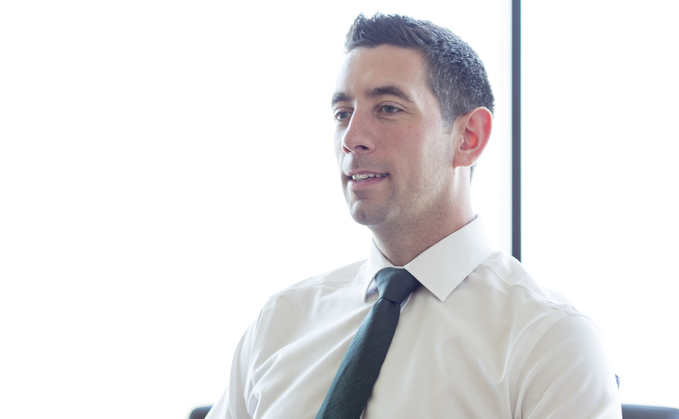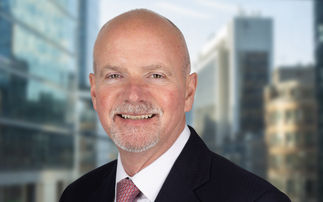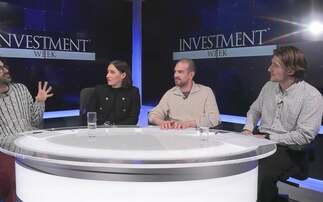
Can you give a brief overview of your strategy in terms of what you are trying to achieve for investors, your investment process and the make-up of the investment team?
Global Stewardship is Baillie Gifford's sustainable growth fund. As such it blends growth and sustainability criteria within its investment process and to do so uses a team which comprises both traditional investors and ESG specialists.
Our role as sustainable growth investors is to direct capital towards those companies that are helping the world to thrive, either through what they do or how they do it. For those with reasonable time horizons, this is what truly matters, both because it can provide growth that endures over long periods and because it can drive a significant benefit to society. For growth to be sustainable, one must focus not on avoiding risk and downside, but on embracing sustainability as a world of opportunities. We won't solve the climate crisis by not investing in fossil fuels, nor will we cure neurodegenerative diseases by quizzing scientists about the carbon footprint of their operations. But we might have a shot if we support those innovators in renewable energy and we adopt a pragmatic approach when management are prioritising one good over another. This requires a depth of thought that is impossible for those covering entire equity universes. What's more, it requires imagination, something which is sorely absent from most investment approaches and certainly those with a focus on sustainability.
As long-term investors we enjoy the luxury of operating on a different time horizon to most market participants. It is over decades, rather than quarters, that growth and sustainability converge, and so our definition of investment success is intrinsically linked to broader societal benefit. It is also over these time horizons that the interests of investors, companies and wider society align. Being long term leaves us uniquely positioned to embrace these challenges and to benefit from the opportunities they present.
How are you positioning your portfolio for 2022 and what will be key issues for investors?
We focus more on positioning our portfolio for 2032. On that timeframe we are excited about the fact that disruption is spreading. So far, the technological revolution brought about by vast increases in computing power has impacted just a select few industries. But that is changing as innovation speeds up and spreads out. No industry will be untouched, and this represents a significant broadening of the opportunity set for investors. Three areas look imminently ripe for disruption: energy, finance and healthcare. These are some of the best performing industries in the year so far due to their status as traditional ‘value' plays, yet they look far from the safe havens conventional wisdom would cast them as. In each we are finding lots of new ideas, creating very healthy competition for capital in the portfolio and forcing us to re-test the investment cases of our existing holdings.
Meanwhile, we have been embracing the recent volatility in equity markets to add to positions in companies we fundamentally like, but whose share prices we considered too expensive last year. We have also been taking new positions in long-admired companies whose valuations look more attractive than ever. One example is Moderna which we purchased for Global Stewardship in late March when it was trading 65% below its peak. The market views Stephane Bancel's firm as little more than a vaccine company but we would argue it could be the first ever pharmaceutical company to enjoy increasing returns to scale as it applies the mRNA platform it pioneered to address some of today's biggest killers, including cancer and cardiovascular disease.
In the long term evidence suggests that those firms which deliver the strongest earnings and revenue growth will see the best share price returns. However this fundamental relationship can break down, sometimes spectacularly, in the short run. We are experiencing such a dislocation now. This is when our competitive advantage is greatest, as the time horizons of those around us shorten we can remain resolutely focussed on the long term.
Can you identify a couple of key investment opportunities for your fund you are playing at the moment in the portfolio? This could be at a stock, sector or thematic level.
The energy transition is likely to be the most significant mandated growth driver of our time, and is a fantastic example of the difference in time horizon between Baillie Gifford and the rest of the market. The conflict in Ukraine has led oil and gas prices to surge, adding further fuel to inflation in the short term. But what are the long run effects? A hike in home heating bills is quite likely to drive demand for Nibe's heat pumps or Samsung SDIs energy storage solutions. The increasing cost of gasoline might speed up the transition from ICEs to EVs - less than 2 million Teslas have ever been made and there are >1 billion cars on the road globally.
While lack of exposure to oil and gas has been a short-term headwind for our fund we believe it is much more important to be positioned correctly for the long run. In that regard the very low emissions intensity of the portfolio puts us in a strong position and helps fund companies that can solve environmental challenges. More significantly for companies though, following COP26 in Glasgow last year there is widespread agreement that a tax on carbon emissions is necessary to avoid the worst effects of the climate crisis. This is likely to be north of $100 a tonne and, as such, will prove much more of a headwind for the big emitters than an uptick in inflation or interest rates, yet it is receiving much less airtime in the financial press. For most of our holdings, this will be a tailwind rather than a headwind.
To find out more, please click here.
This post was funded by Baillie Gifford.












